|
Porto
|
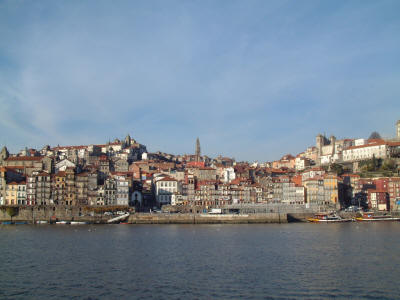 Porto
is the famous producer of fortified wines. This is the second largest
and second most important city in Portugal lying near the mouth of the River Douro,
about 280 km north of Lisboa. Porto
is the famous producer of fortified wines. This is the second largest
and second most important city in Portugal lying near the mouth of the River Douro,
about 280 km north of Lisboa. |
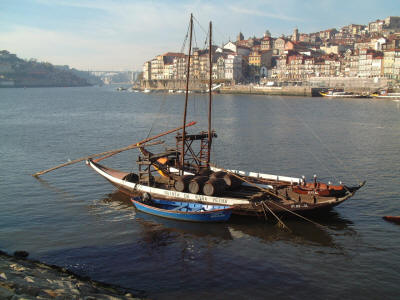 The
pictures above and on the left were taken from the Vila Nova de Gaia, across the Douro
from the City of Porto. Most of the Port Wine producers have their
offices and warehouses on this side of the river. The sailing skiffs
in the foreground were previously used to move casks of port from the
warehouses to larger ships lying off-shore. They are now permanently
anchored here for the benefit of the tourists. There are a number of
larger versions of these skiffs that are used for river tours The
pictures above and on the left were taken from the Vila Nova de Gaia, across the Douro
from the City of Porto. Most of the Port Wine producers have their
offices and warehouses on this side of the river. The sailing skiffs
in the foreground were previously used to move casks of port from the
warehouses to larger ships lying off-shore. They are now permanently
anchored here for the benefit of the tourists. There are a number of
larger versions of these skiffs that are used for river tours |
The
shore line of the city of Porto is famously recognizable by the apartment
buildings and stores lining the water front. Clothes hanging to dry on
balconies is an essential part of this scene.
|
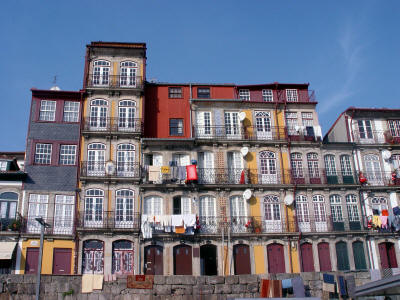
Photo by Jack & Nikki Goodman |
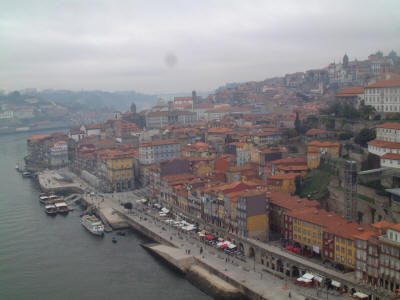 Porto
certainly has an old world look, feel and smell to it. Narrow cobble
stoned streets with narrower walk ways, and balconied apartments overlooking
the streets. Porto
certainly has an old world look, feel and smell to it. Narrow cobble
stoned streets with narrower walk ways, and balconied apartments overlooking
the streets. |
|
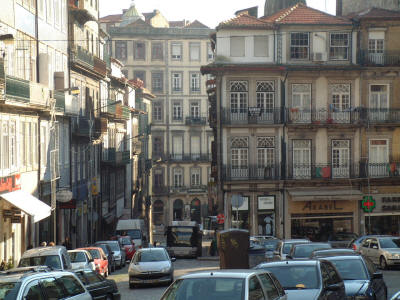 Porto
is also congested and more than a little grimy. We visited Porto in
early December and somehow it felt more like winter in Porto than in Cascais
and Lisboa, only a few hundred kilometers to the south. Porto
is also congested and more than a little grimy. We visited Porto in
early December and somehow it felt more like winter in Porto than in Cascais
and Lisboa, only a few hundred kilometers to the south.
In spite of that it is a very interesting city to visit, and we enjoyed
our brief stay. |
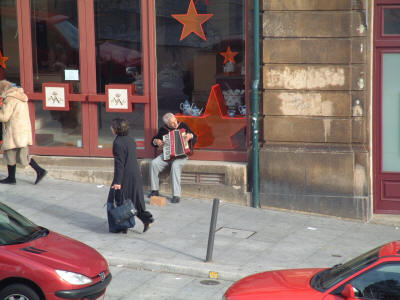 |
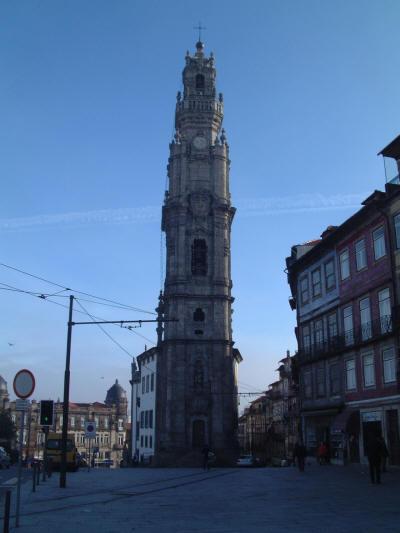 This
is the Igreja and Torre dos Clerigos in the heart of Central Porto. It is
the highest vantage point in the city and open to the public. We climbed
the 225 steps to the top of the tower and took the pictures of Porto shown
below. This
is the Igreja and Torre dos Clerigos in the heart of Central Porto. It is
the highest vantage point in the city and open to the public. We climbed
the 225 steps to the top of the tower and took the pictures of Porto shown
below. |
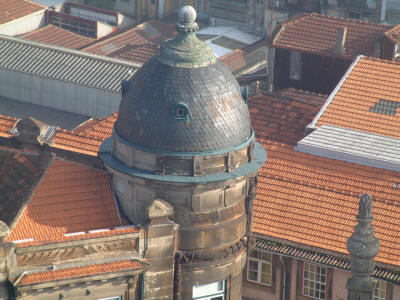 |
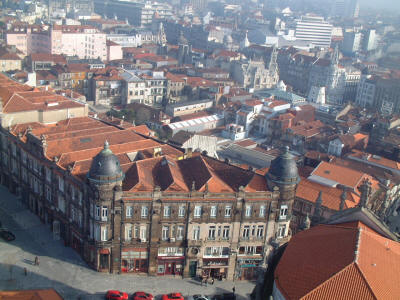 |
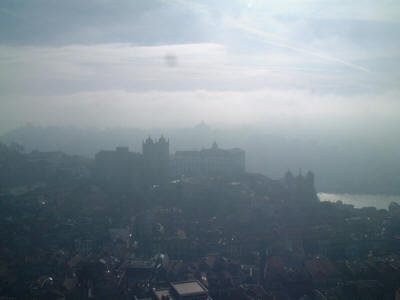 |
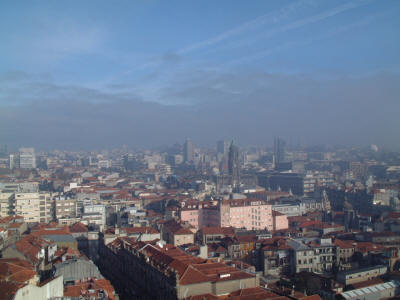 |
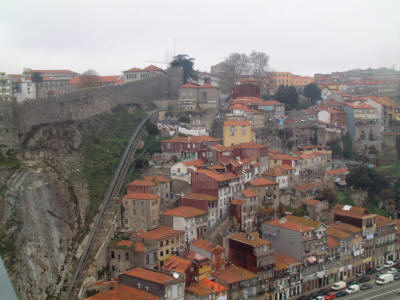 Like every coastal city and town we have visited in Portugal, Porto is very
hilly and nearly every destination appears to be up hill. When we
returned from tasting Port Wine in the Vila Nova de Gaia we had a long
uphill climb back to our hotel. Fortunately there is a tram at the
base of the Ponte Dom Luis I bridge that took us more than half of the
vertical climb back to our rooms. Like every coastal city and town we have visited in Portugal, Porto is very
hilly and nearly every destination appears to be up hill. When we
returned from tasting Port Wine in the Vila Nova de Gaia we had a long
uphill climb back to our hotel. Fortunately there is a tram at the
base of the Ponte Dom Luis I bridge that took us more than half of the
vertical climb back to our rooms. |
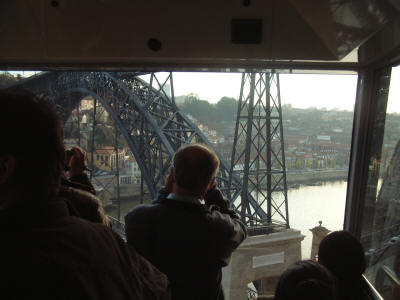 |
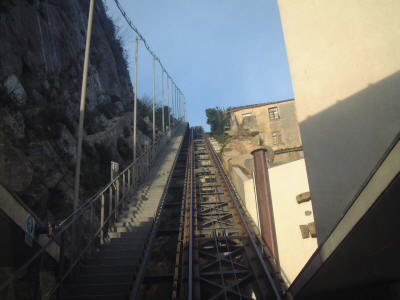 |
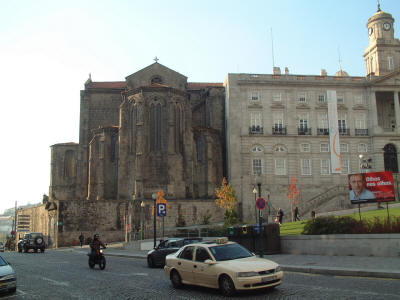 The
medieval cathedral on the left is the Igreja de Sao Francisco. Inside is
another exhibit of bones similar, but slightly less gruesome, than the
Capel dos Ossos in Evora. What was it with those Franciscan Monks? Oh
well, I guess having a bone fetish is better than being a pedophile.
|
|
The
catacombs below the church are open to the public. We didn't inquire,
but we assume the catacombs contain the remains of prominent citizens of
Porto. The bizarre part are the skulls and bones displayed on top of
the crypts. Even more bizarre is the pit below the crypt area where
bones of many deceased have been apparently just tossed. There is a
viewing window into this pit, through which the picture below, right was
taken. |
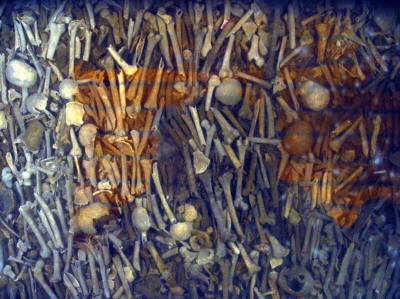
Photo by Jack Goodman |
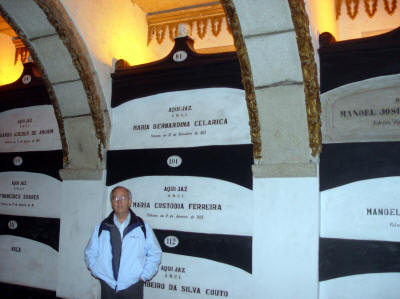
Photo
by Nikki Goodman |
There
is a large market in the heart of Porto where you can buy just about any
type of produce, fish or meat as well as shoes, clothes, luggage and
religious articles.
|
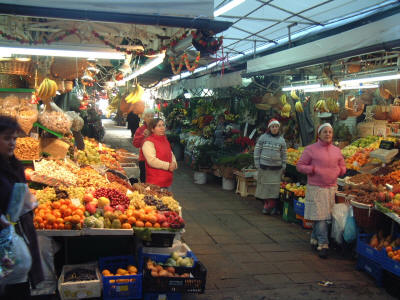
Photo by Nikki Goodman |
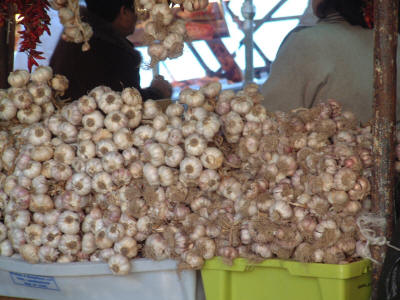 Obviously
the market is free of vampires. Or is it werewolves? I can't
ever get that straight. Obviously
the market is free of vampires. Or is it werewolves? I can't
ever get that straight. |
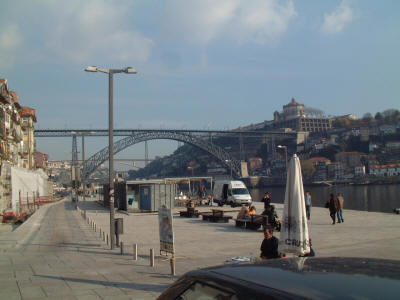 The
Ponte Dom Luis I bridge dominates the Porto waterfront. This is a
two-tiered bridge with auto traffic on the lower level and train traffic on
the upper. Both levels are accessible by foot. The
Ponte Dom Luis I bridge dominates the Porto waterfront. This is a
two-tiered bridge with auto traffic on the lower level and train traffic on
the upper. Both levels are accessible by foot. |
 |
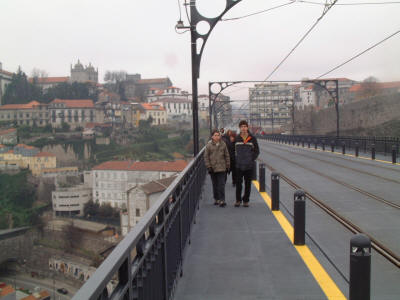 |
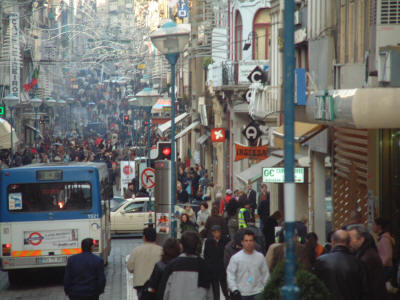 Our
hotel was located on the upper part of the Avenida Santa Catarina, which on
its lower part is a pedestrian shopping district. This being early December
the Christmas shoppers are out in droves. The mist seen in the picture on
the right is actually smoke for the street vendors selling roasted Chestnuts. Our
hotel was located on the upper part of the Avenida Santa Catarina, which on
its lower part is a pedestrian shopping district. This being early December
the Christmas shoppers are out in droves. The mist seen in the picture on
the right is actually smoke for the street vendors selling roasted Chestnuts. |
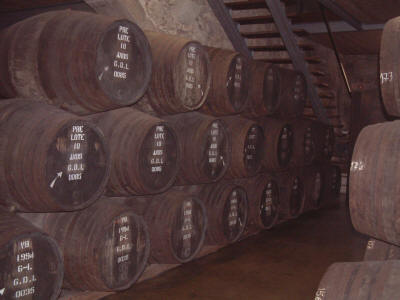 We
spent one afternoon touring Vila Nova de Gaia and the Port Wine Lodges. We
only stopped to sample the wines at one warehouse, Vasconcellos Porto. This
is a relatively small Portuguese-owned producer. Most of their output is
consumed in Portugal and France. We enjoyed the tour and the sampling and
purchased a couple of bottles of their less expensive Ports. Most of the
other, larger lodges were much more clearly tourist businesses (not that
Vasconcellos wasn't), and less accommodating.
|
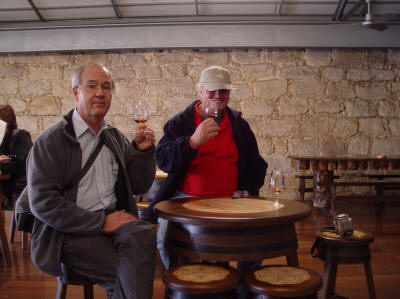
Photo
by Nikki Goodman |